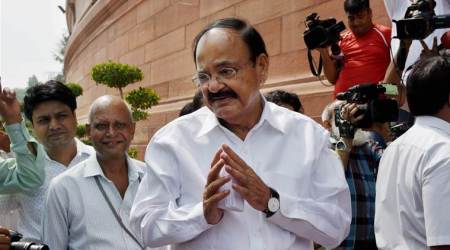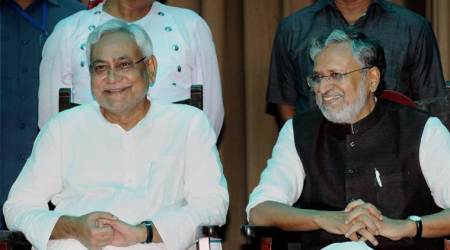 Illuminated Raisina hills on the occasion of Republic Day in New Delhi on January 29, 2017. (Source: AP Photo/File)
Illuminated Raisina hills on the occasion of Republic Day in New Delhi on January 29, 2017. (Source: AP Photo/File)
Raisinia Hill is witnessing a change of guard. We have a newly elected president, and voting to determine the next vice president will take place today. The occupants of these two constitutional offices will set the tone for the functioning of Parliament for the next five years. The president is a part of Parliament but is a passive observer of its proceedings. The vice president, on the other hand, is also the chairman of Rajya Sabha. His role becomes significant because of the Rajya Sabha increasingly asserting its authority in law-making in the last three years.
James Madison, the father of the American Constitution, captured the essence of the Upper House of legislature in the Federalist Papers. Describing the United States Senate, he wrote that it was “the great anchor of the government,” whose slower processes and higher thresholds for action would guard against the “fickleness and passion” of public opinion. Dr Radhakrishnan, our first vice president, echoed a similar sentiment. He said, “We should try to do everything in our power to justify to the public of this country that a Second Chamber is essential to prevent hasty legislation.” The new vice president will face three broad challenges in upholding this role of Rajya Sabha.
The first challenge will be securing the effective scrutiny of legislation before Rajya Sabha. For the last three years, the balance of numbers in the Upper House was in favour of the Opposition. It enabled the RS to resist the pressure to speed up the government’s legislative business. With the ruling party securing electoral victories and forging new alliances in states, the scale will likely tilt in its favour from next year. A majority of the treasury benches in the House might result in increased attempts to bypass procedures designed to scrutinise legislation. In these circumstances, the RS chairman will have to ensure that the House fulfills its constitutional mandate of thoroughly debating all laws.
The second challenge before the presiding officer of the Upper House will be to initiate much-needed reforms to overhaul its working. The thrust of these reforms will be to ensure greater accountability of government, strengthen debate and minimise the disruption of proceedings. During his eight-year tenure, the current vice president tooksteps in this direction. He tweaked the starting time of Question Hour. He also increased the working time of the Upper House by an hour to make up for time lost due to disruptions. Under his watch, bills could not be passed without debate.
But perhaps the biggest challenge for the new vice president will be to assume a non-partisan role while managing the functioning of the House. Jaswant Singh was the leader of the Opposition when the current vice president assumed office in 2007. In his remarks felicitating the newly elected chair of the House, Singh observed that in the working of the House the government must “have its way.” In the same breath, he added that the government could only have its way if the Opposition “has its say.” The new VP will need to have the confidence of MPs on both sides of the aisle. He will have to play the arbiter between political parties and set the benchmark for non-partisan conduct.
The new VP will have his task cut out for him. The nature of Rajya Sabha will change in his tenure, and he will be leading the House into the next decade. As its custodian, he will be judged on the effectiveness of the Upper House as a legislative and deliberative body.







